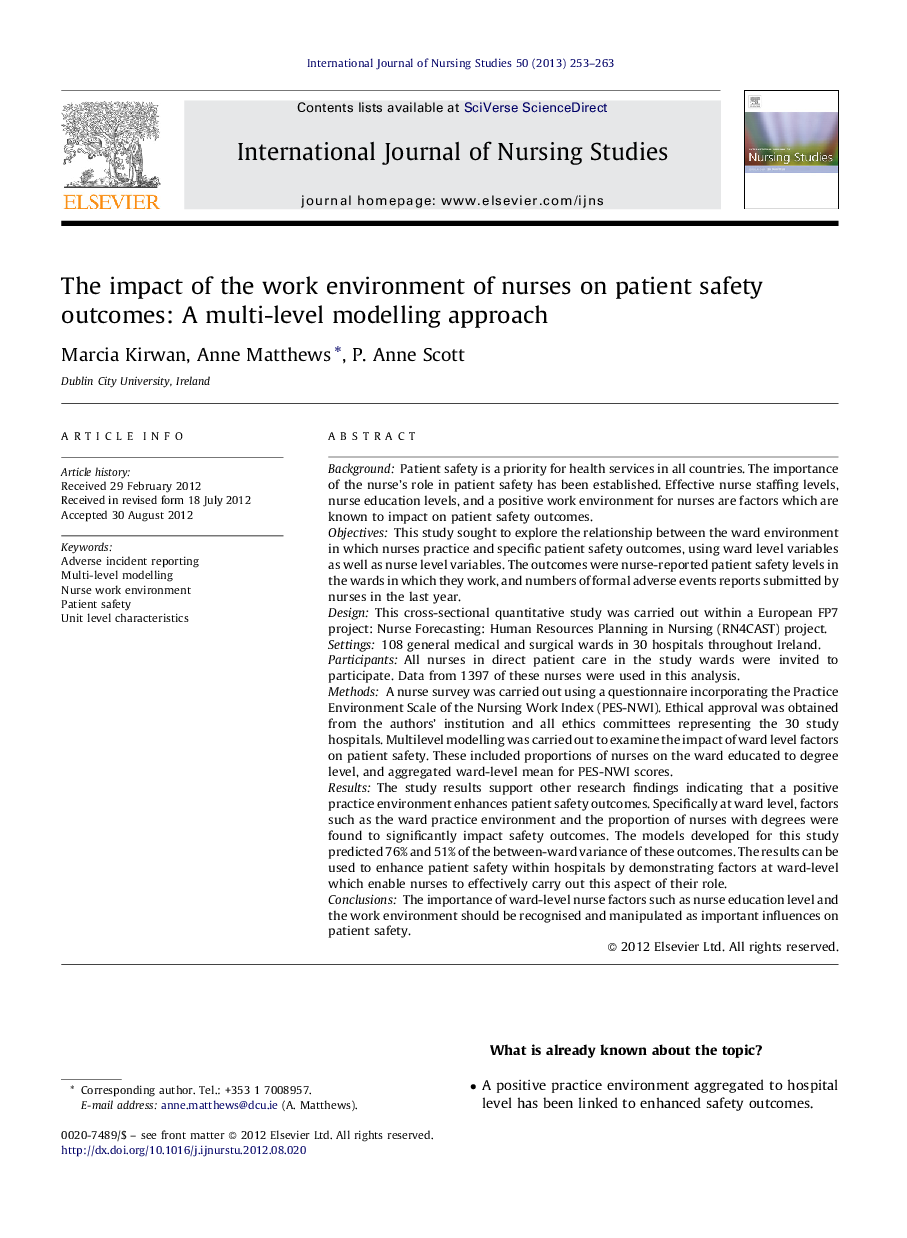| Article ID | Journal | Published Year | Pages | File Type |
|---|---|---|---|---|
| 1076434 | International Journal of Nursing Studies | 2013 | 11 Pages |
BackgroundPatient safety is a priority for health services in all countries. The importance of the nurse's role in patient safety has been established. Effective nurse staffing levels, nurse education levels, and a positive work environment for nurses are factors which are known to impact on patient safety outcomes.ObjectivesThis study sought to explore the relationship between the ward environment in which nurses practice and specific patient safety outcomes, using ward level variables as well as nurse level variables. The outcomes were nurse-reported patient safety levels in the wards in which they work, and numbers of formal adverse events reports submitted by nurses in the last year.DesignThis cross-sectional quantitative study was carried out within a European FP7 project: Nurse Forecasting: Human Resources Planning in Nursing (RN4CAST) project.Settings108 general medical and surgical wards in 30 hospitals throughout Ireland.ParticipantsAll nurses in direct patient care in the study wards were invited to participate. Data from 1397 of these nurses were used in this analysis.MethodsA nurse survey was carried out using a questionnaire incorporating the Practice Environment Scale of the Nursing Work Index (PES-NWI). Ethical approval was obtained from the authors’ institution and all ethics committees representing the 30 study hospitals. Multilevel modelling was carried out to examine the impact of ward level factors on patient safety. These included proportions of nurses on the ward educated to degree level, and aggregated ward-level mean for PES-NWI scores.ResultsThe study results support other research findings indicating that a positive practice environment enhances patient safety outcomes. Specifically at ward level, factors such as the ward practice environment and the proportion of nurses with degrees were found to significantly impact safety outcomes. The models developed for this study predicted 76% and 51% of the between-ward variance of these outcomes. The results can be used to enhance patient safety within hospitals by demonstrating factors at ward-level which enable nurses to effectively carry out this aspect of their role.ConclusionsThe importance of ward-level nurse factors such as nurse education level and the work environment should be recognised and manipulated as important influences on patient safety.
